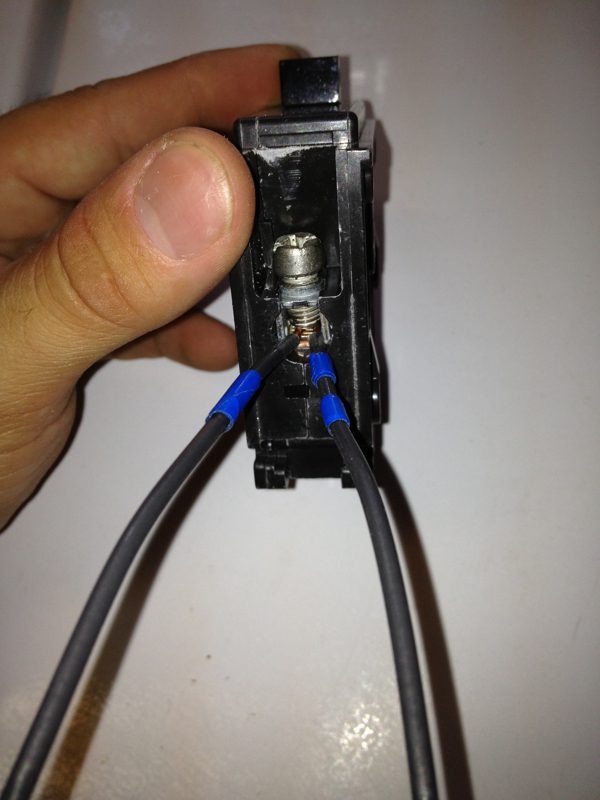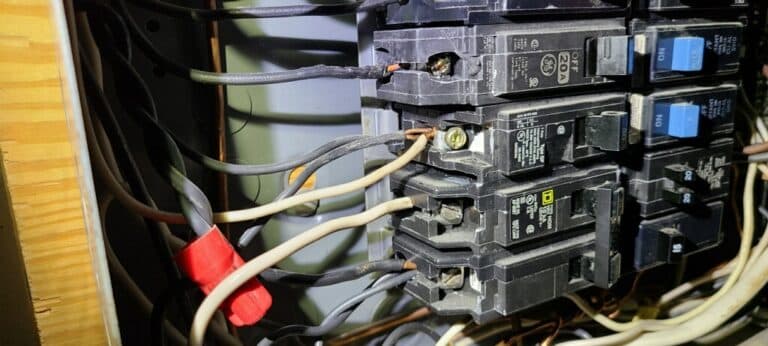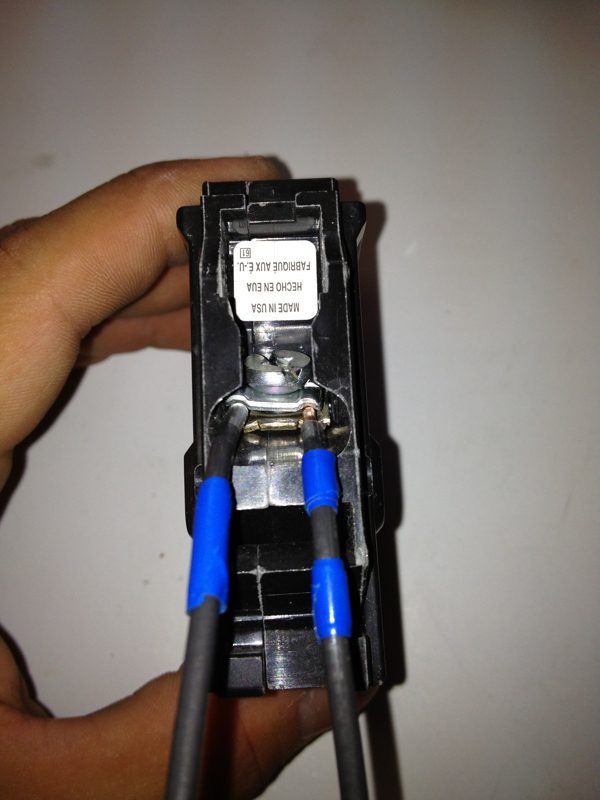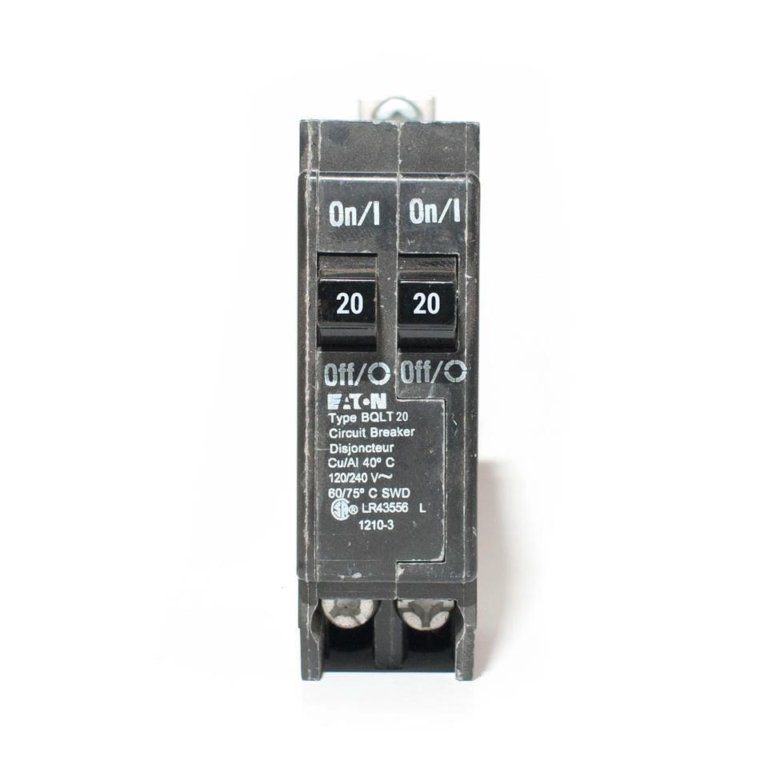4.8 1700+ Google Reviews

Double-tapped breakers are among the most common electrical defects we find in homes during inspections here in Richmond. Although they are a hazard, they are a pretty easy to fix.
A double-tapped breaker occurs when two hot wires (typically black) connect to a single breaker terminal that is only rated for one wire.
This setup can lead to loose connections, arcing, and even electrical fires. You can see an example in the photo below—blue tape was added to help highlight the wires.


The National Electrical Code (NEC) doesn’t specifically ban double tapping. However, NEC Code 110.3(B) says:
"Listed or labeled equipment shall be installed and used in accordance with any instructions included in the listing or labeling."
In other words, breakers must be installed according to the manufacturer's specifications. Most breakers are only rated for a single wire, so installing two is a code violation if the breaker isn’t listed for it.
Before assuming it's a defect, check whether the breaker is listed for two wires. Some manufacturers, such as Cutler Hammer and Square D, produce breakers approved for two conductors. In the photo below, the breaker has two grooves in the terminal, showing it’s designed to hold two wires.
To confirm, look at the front of the breaker after removing the panel cover. The label or diagram should state if it allows two conductors. Both wires must also be the same size and material—you can’t mix copper and aluminum or combine different wire gauges (e.g., a 14 AWG and a 12 AWG wire).
Sometimes, this information is on the side of the breaker, which means you’ll need to remove it to check.
One common mistake inspectors make is confusing the number of poles with the number of wires allowed. Just because a breaker is single-pole doesn’t mean it only supports one wire.
So, if a breaker is rated for two wires and has two installed, it’s not a double tap. Double tapping only happens when two wires are connected to a breaker rated for just one.

Fixing a double-tapped breaker is usually straightforward. A licensed electrician can remove both wires, connect them to a third wire using a wire nut (a process called “pigtailing”), and then connect that single wire to the breaker.
Now, only one conductor is connected to the breaker terminal—problem solved.
However, this isn't always an appropriate repair. For example, it may add to many outlets to one circuit. Or, it may combine two dedicated circuits.

While pigtailing is a common fix, it’s not always appropriate. Sometimes the circuit already has too many devices, or one of the circuits must be dedicated.
In those cases, an electrician can install a new breaker in the panel or use a tandem breaker—if the panel allows them. Tandem breakers are two smaller breakers that fit in a single breaker slot.
However, not all panels accept tandem breakers, and some restrict where they can be installed.

If there’s no space left in the panel and it doesn’t accept tandem breakers, the repair becomes more complex. This situation is more common in older electrical systems. In such cases, the best long-term solution might be to replace the entire breaker box with a larger panel. A licensed electrical contractor can help determine the best course of action.
If you’re experienced and confident, you might be able to handle the fix yourself. That said, we always recommend hiring a qualified electrician to ensure the work is done safely and up to code.
Double tapping doesn’t only happen at breakers—it can also occur on the neutral bar. In that case, it’s called double lugging.
Double lugging happens when two grounded conductors (typically white wires) are secured under one terminal screw. This is a defect because the neutral bus bar terminals are only listed for one grounded conductor each.
Loose connections here can also lead to arcing, as shown in the image on the right.
In multi-wire branch circuits (MWBCs), loosening one grounded conductor while the circuit is under load can be dangerous. The current may shift to the other conductor in the MWBC, potentially overloading that circuit.
Ground wires are a different story. Usually, you’re allowed to install at least two ground wires in a single terminal. Ground wires are typically bare copper, and the terminal label will state how many are permitted. Always follow labeling and installation guidelines.
Now you know what a double-tapped breaker is and how to fix it.
In short, while double taps are a common electrical defect, they’re typically easy for a qualified electrician to repair. There’s usually no reason to panic—but it’s worth addressing sooner than later to keep your home safe.